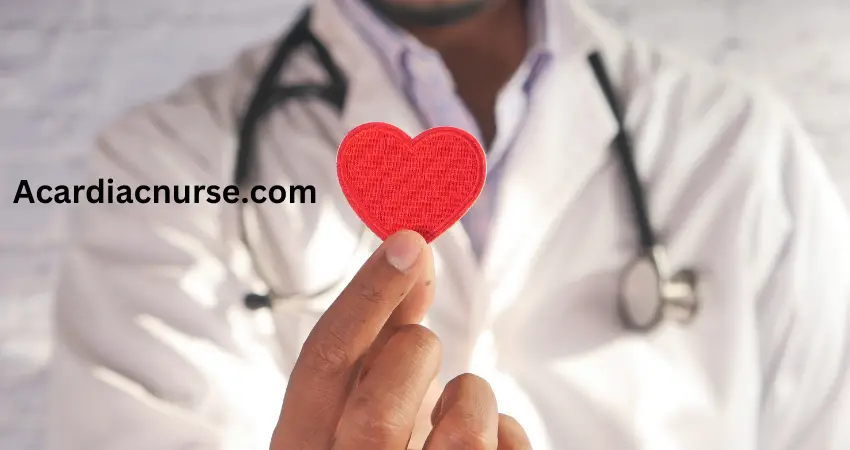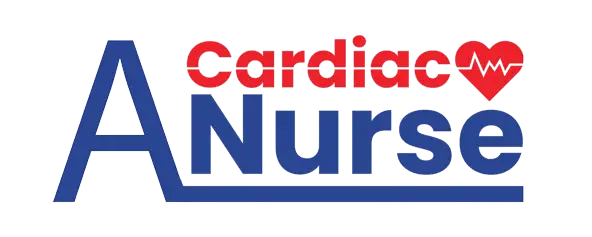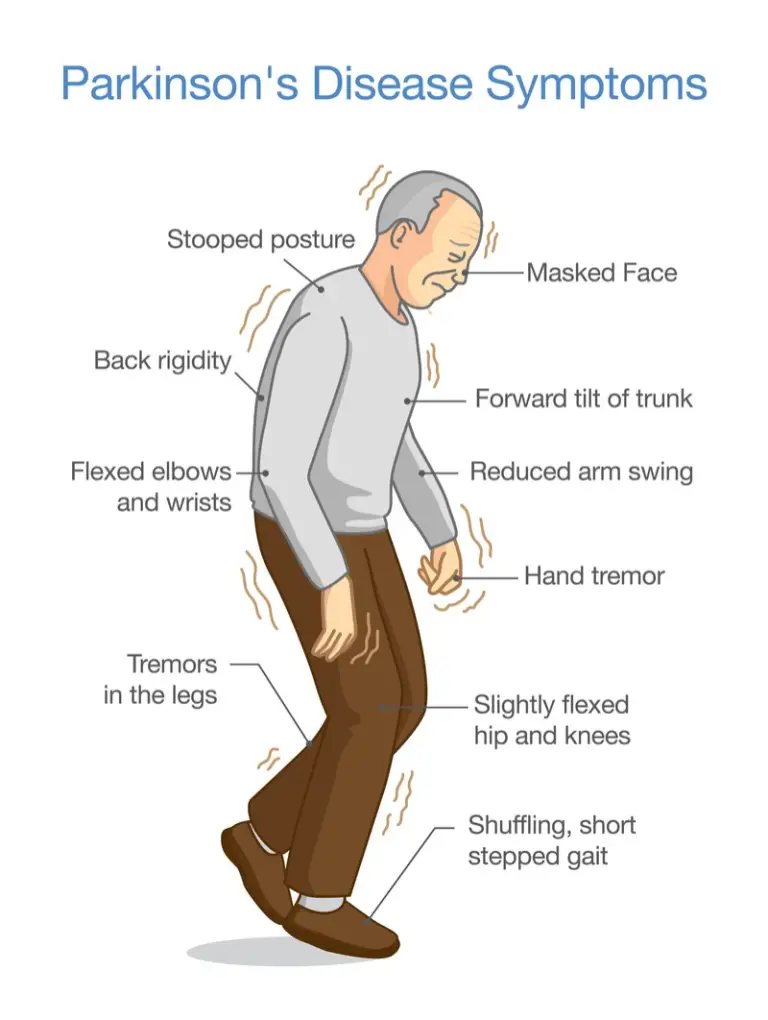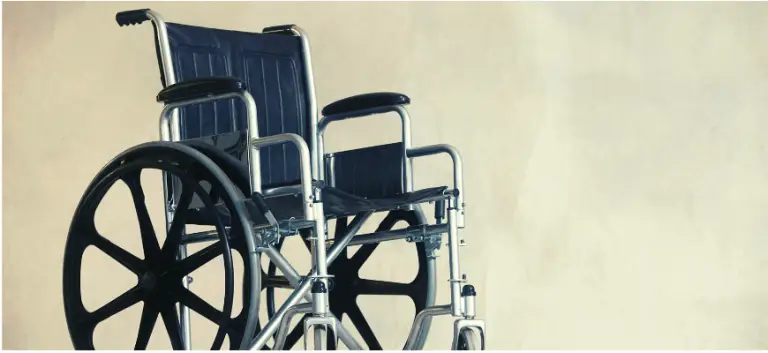Acute Coronary Syndrome: A Nurse’s Guide

cute Coronary Syndrome (ACS): A Closer Look
I. Symptoms of ACS
- Chest Pain (Angina): A common sign that can spread to other body parts.
- Other symptoms: Shortness of breath, sweating, feeling sick, or faintness.
- Women’s symptoms: Women might feel symptoms differently like indigestion, palpitations, tiredness, numb hands, or discomfort.
II. Types of ACS
- Unstable Angina (UA): Unpredictable chest pain that lasts longer and might not be eased by rest or medicines.
- Non-ST-Segment Elevation Myocardial Infarction (NSTEMI): Similar to UA, but more intense and lasts longer.
- ST-Segment Elevation Myocardial Infarction (STEMI): A severe condition that needs urgent treatment.
III. What Happens in ACS? (Pathophysiology)
- Damage to Arteries: The blood tubes that go to the heart can get narrow because of fatty buildup, and that hurts the inside lining.
- Oxygen Trouble: Less oxygen goes to the heart muscle, causing pain.
- Plaque Trouble: Hard and soft fatty bits can both make problems, causing blood clots and blockages.
IV. Why Does ACS Happen? (Etiology)
- Main Cause: Heart blood tube disease, where fatty bits narrow the tubes.
- Risk Factors: Being older, having certain blood sugar and cholesterol problems, being overweight, not moving much, smoking, having Type 2 diabetes, or family history of heart issues.
V. Facts and Figures (Statistics)
- People Affected: Around 82.6 million people in America have heart problems.
- Types of Disease: 16.3 million have blood tube disease; about 9 million have angina.
- New Cases: 400,000 new cases each year, mostly in older folks.
- Deaths: In 2008, 812,000 deaths from heart problems; that’s about 33% of all deaths.
- Costs: Lots of money is spent on heart tests and treatments, like $11 billion on a type of blood tube clearing.
This is How a Nurse would Do Their Assessment for ACS
| Aspect to Assess | Description |
|---|---|
| Chest Pain (Angina) | Assess the nature, location, intensity, and duration of pain. Look for any radiating pain to the jaw, neck, back, or arm. |
| Vital Signs | Monitor blood pressure, heart rate, oxygen saturation (SaO2), and respiratory rate to identify any abnormal changes. |
| Electrocardiogram (ECG) Changes | Assess for ST-segment depression, inverted T waves, or other ECG changes that may indicate myocardial ischemia. |
| Cardiac Biomarkers | Check blood levels of substances like troponin, which can signal heart damage. |
| Physical Appearance | Observe for signs of distress such as sweating (diaphoresis), nausea, or lightheadedness. |
| Breathing (Dyspnea) | Assess for shortness of breath and difficulty breathing, which may be a sign of decreased oxygen supply to the heart. |
| Patient History | Gather information on risk factors like age, weight, smoking habits, diabetes, family history of heart disease, and previous heart conditions. |
| Medication Response | Monitor how the patient responds to medications given for chest pain or other symptoms. Note any side effects or changes in symptoms. |
| Emotional State | Evaluate the patient’s anxiety or emotional distress, as these can impact both the experience of pain and the body’s response to treatment. |
| Women’s Atypical Symptoms | Be aware of non-traditional symptoms in women such as indigestion, palpitations, fatigue, or numbness in the hands. |
This assessment helps nurses to identify the signs and symptoms of ACS, monitor the patient’s condition, and guide appropriate care and treatment. It also allows nurses to provide individualized care, considering unique factors that may vary from patient to patient.
Diagnostic Test and Why They Are Done
| Diagnostic Studies | What It Tells Me |
|---|---|
| Electrocardiogram (ECG): Measures heart’s electrical activity | Detects rhythm problems, possible heart damage, or lack of blood flow to heart tissue |
| Echocardiography: 2D visual of heart and its structures | Shows how the heart and its parts are working |
| Cardiac Catheterization with Angiography: Checks heart and valves | Finds blockages in heart arteries, abnormal heart and valve size or shape, checks heart muscle’s squeezing ability |
| Coronary Computed Tomography Angiography (CTA): 3D heart pictures | Shows detailed images of the heart and blood vessels, helpful for early diagnosis of heart disease |
| Chest X-ray: Looks at the lungs | Finds any unusual substances in the lungs |
BLOOD TESTS
| Test | What It Tells Me |
|---|---|
| Cardiac Enzymes, including troponin I and troponin T, CPK, CK, CK-MB: | Released from heart muscle when it’s damaged. Troponins provide high accuracy in finding injury to heart cells, can detect small heart attacks |
In urgent cases, the ECG is vital. It shows immediate changes in the heart, helps confirm if symptoms are heart-related, and might reveal existing heart problems. Changes in the ECG can indicate different conditions like unstable angina or acute MI.
Other Insights:
- Echocardiogram: Helps define the damage extent if muscle injury occurs.
- Cardiac Catheterization: Advised for high-risk patients or those with stubborn angina.
- CT Scanners: Can complete a full scan quickly, aiding in early diagnosis and treatment of heart disease.
This summary provides an overview of various diagnostic and blood tests used to assess the heart, as well as what each test reveals about the patient’s heart health.
Acute Coronary Syndrome Nursing Care Plan
NURSING DIAGNOSIS: Acute Pain in Cardiovascular – Acute Coronary Syndrome
| Related To | Physical agents (increased cardiac workload and oxygen consumption, decreased myocardial blood flow, tissue ischemia) |
|---|---|
| As Evidenced By | Verbal/coded reports of pain, Expressive behaviors (moaning, crying, pacing, restlessness), Diaphoresis, Changes in BP, heart rate, respiratory rate, pupillary dilation, Self-focus |
Desired Outcomes/Evaluation Criteria—Client Will | Pain Level: Report anginal episodes decreased in frequency, duration, and severity. Demonstrate relief of pain, as evidenced by stable vital signs and absence of muscle tension and restlessness.
| ACTIONS/INTERVENTIONS | RATIONALE |
|---|---|
| Pain Management – Independent | |
| Instruct client to notify nurse when chest pain occurs | Provides information about disease progression. Aids in evaluating effectiveness of interventions |
| Assess and document client response to medication | Helps in evaluating possible progression or process |
| Identify pain’s frequency, duration, intensity, location | Differentiates chest pain and aids in evaluating possible progression |
| Evaluate pain in jaw, neck, shoulder, arm, or hand | Cardiac pain may radiate; pain is often referred to more superficial sites served by the same spinal cord nerve level |
| Monitor vital signs every 5 minutes during initial attack | BP may initially rise because of sympathetic stimulation and then fall if cardiac output is compromised. Tachycardia also develops in response to sympathetic stimulation and may be sustained if cardiac output falls |
| Place client at complete rest during anginal episodes | Reduces myocardial oxygen demand to minimize risk of tissue injury and necrosis |
| Elevate head of bed if client is short of breath | Facilitates gas exchange to decrease hypoxia and resultant shortness of breath |
| Observe for associated symptoms (dyspnea, nausea, etc.) | Decreased cardiac output stimulates sympathetic or parasympathetic nervous system, causing various sensations related to anginal episode |
| Stay with client who is experiencing pain/anxiety | Anxiety releases catecholamines, which increase myocardial workload. Presence of nurse can reduce feelings of fear and helplessness |
| Maintain quiet, comfortable environment; restrict visitors | Mental or emotional stress increases myocardial workload |
| Collaborative | |
| Collaborate in treatment of condition | Initial therapy for ACS should focus on stabilizing the client’s condition, relieving ischemic pain, and providing antithrombotic therapy to reduce myocardial damage and prevent further ischemia |
| Provide supplemental oxygen | Increases oxygen available for myocardial uptake to relieve ischemic pain |
| Administer analgesics (morphine sulfate, fentanyl) | Potent opioid analgesic used in acute angina because of its beneficial side effects, including peripheral vasodilation and reduced myocardial workload |
| Administer anti-anginal medication(s) (nitroglycerin) | Nitrates provide symptomatic relief by means of several mechanisms, including coronary vasodilation, improved collateral blood flow, decrease in preload |
References
Related Articles
How to take manuka honey for ibs
Phyllis Robinson MSN, RN is a Registered Nurse of 27 years. Phyllis is passionate about the prevention and healing of heart disease using traditional and alternative methods. She has experience in emergency room, telemetry, infusion, and critical care. Phyllis currently practices in an intensive care unit.






